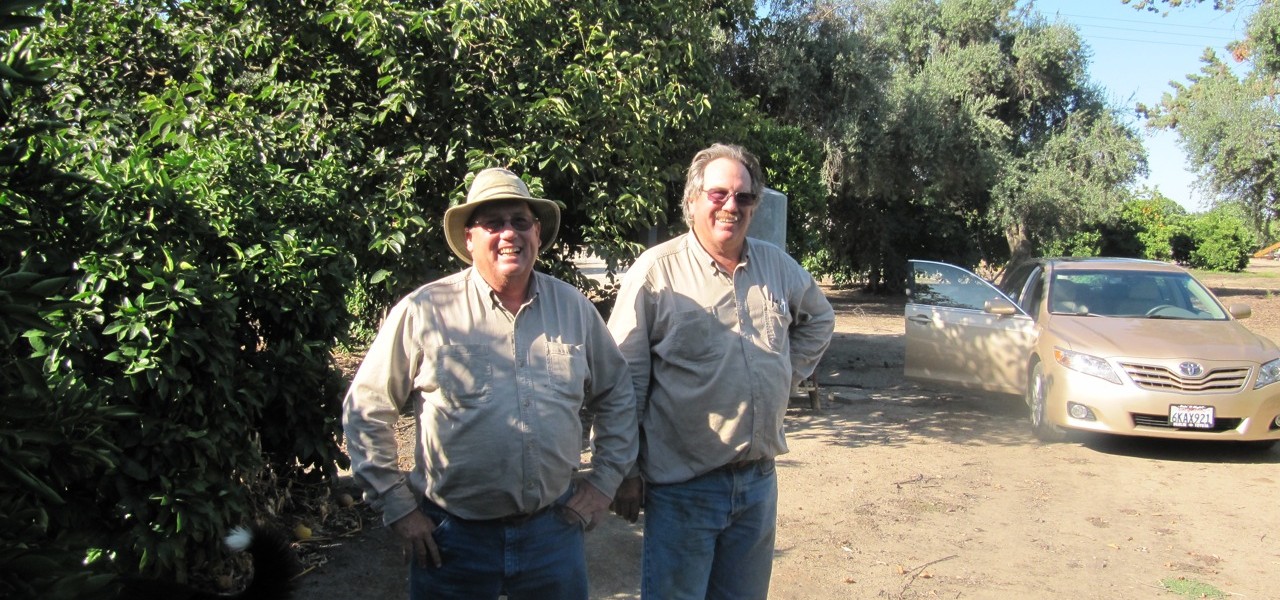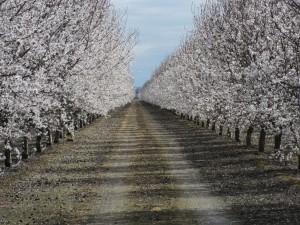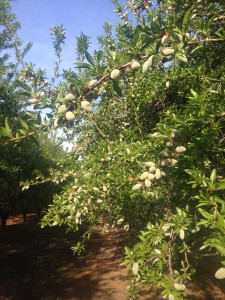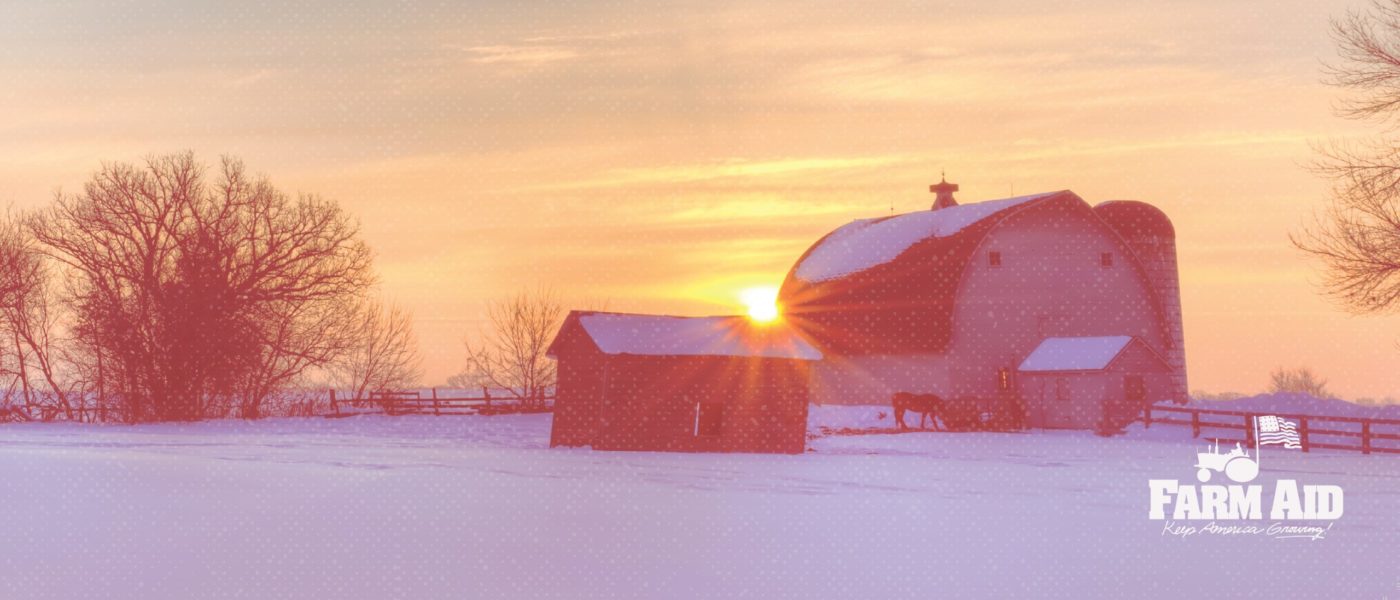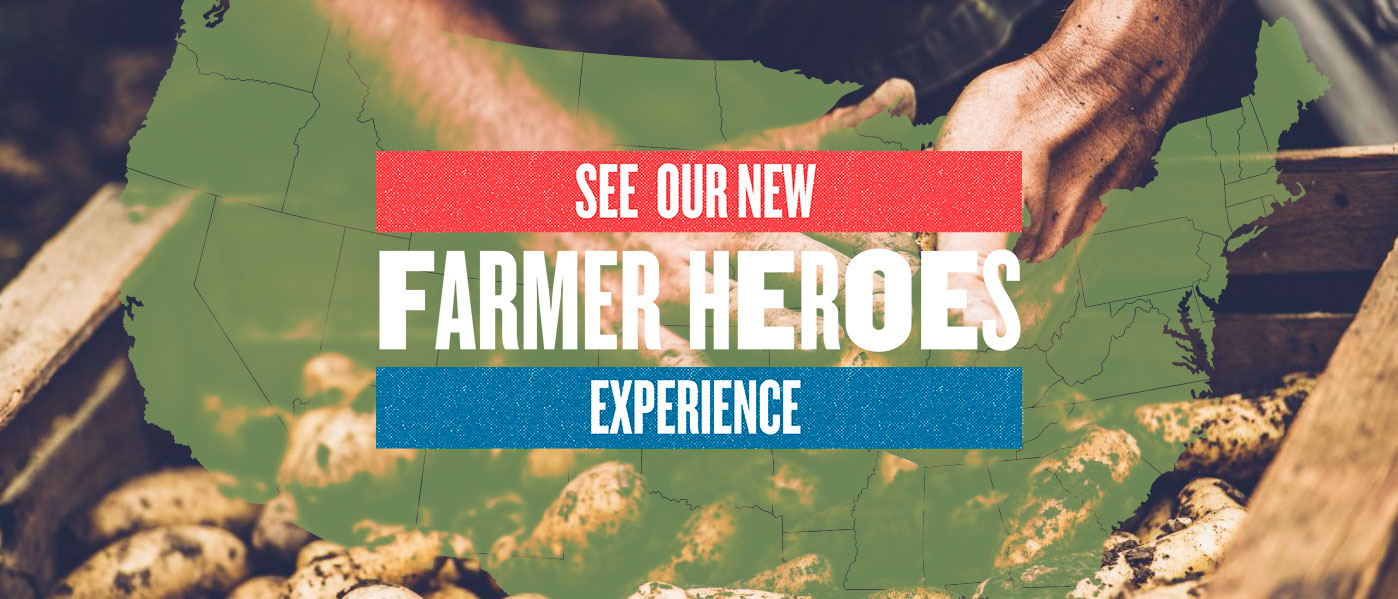Tom Rogers’ 186-acre Madera County almond farm has managed to not only survive, but thrive in California’s record-breaking drought with the help of careful planning, stewardship and a little bit of luck. This photo shows Tom on the right, with his brother Dan on the farm.
The Central Valley farm has been in Tom’s family since his grandfather started it in 1916. With the help of just one employee, Tom and his brother, Dan Rogers, have groomed the land into a successful almond farm.
“My brother and I try to do a better job with a little bit,” says Tom of the relatively small size of his farm in comparison to others in the area. “We decided that we would rather have a small operation and be able to do the majority of the work ourselves. We enjoy what we’re doing and want to do the very best job we can.”
This drive for excellence is the key to their success. A large amount of their time is focused on management: when to fertilize the soil, when to spray the trees, how to make the most of their inputs. Tom and his brother get together each week to work on their plan for the upcoming days.
“For us, it’s just a lot of planning and trying to figure out the best way,” says Tom. “We sit down periodically and say ‘Alright, what did we do right? What did we do wrong? And how do we not make the same mistake again?'”
But not everything is under their control. The year 2013 was the driest in California’s recorded history, and 2014 is continuing in the same vein. In the midst of this devastating drought that has some farmers uprooting orchards and leaving land fallow, Tom’s meticulous attention to detail has been his saving grace. Because he has always paid such close attention to the needs of his trees, Tom is an expert at maximizing the effects of his water. Early on, the brothers learned from their father to use barometers to measure the moisture of their farm’s soil to ensure they are not under-irrigating or over-irrigating their crops.
“We’re doing everything we can to build a really healthy soil,” says Tom, who uses products and compost to enhance the quality of his soil. “A healthy soil takes the water and holds onto it, so we’re trying to maximize the production for each drop of water we put on.”
Tom and Dan have underground wells to provide them with their own water supply, another key factor in their surviving the drought. Others without their own water have had a much greater struggle, especially since the federal government announced in February that they won’t be able to provide farmers any of the water they normally receive from the federally run system of reservoirs and canals fed by mountain runoff.
This unprecedented development and a change in the kind of farming in California makes this drought different than the last major drought to affect the state.
“In ’77-’78, there was a lot more row crop,” says Tom, reminiscing of the year California was last hit by a drought of the same magnitude as this year’s. “We’re a majority trees now. There was a lot of ground in the last drought that was simply abandoned because there was no water on it. Well, people don’t really have that option this time because those trees are permanent crops and we can’t go a year without irrigating them.”
That’s leaving many farmers with a choice: water as best as possible or tear their orchards out and start over when conditions improve. Tom says under-irrigating permanent crops will affect those crops a year or even two years down the line. And there are ripple effects that go beyond the farm: With less irrigating and harvesting to be done, fewer people will be employed to complete the farm work, so not only will the crop output be affected but the labor force will too. That will have a huge impact on the economies of rural communities.
Tom believes all Californians must pay attention to how much water they are using and learn to not take the water they do have for granted. Tom thinks this lesson and the raised awareness around the importance of water are the silver linings of this devastating drought.
“I think it’s going to have people evaluating their practices and asking how do we maximize the use of the water,” says Tom. “It’s brought the subject up and perhaps we can educate people that we do need storage so that we have the water to do everything we need to.”
The drought will result in a shortage of almonds, which has farmers and buyers wondering if the price of almonds will go up. Nationally, food prices are forecast to rise 3.5% this year as a result of the drought.
California, which grows 82% of the world’s almonds and exports between 60% and 70% of those almonds overseas, is depended upon to keep almonds at a fair price, Tom says, because people will not suddenly have more money to spend on almonds. A higher price is a concern for the almond market, but Tom remains hopeful in the face of the uncertain future.
“That’s why farming is fun,” laughs Tom, “You don’t have all the answers.”
Maybe he doesn’t have all of the answers, but Tom certainly has some. He’s the 2014 recipient of the Farm Water Steward Award, which was established to recognize leaders and innovators in water stewardship across the California agricultural community. Tom has reduced water use by up to 20% by improving irrigation scheduling techniques – combining careful soil moisture monitoring and weather information from on-site stations to precisely determine the timing and amount of irrigation water to apply to his almond trees. By doing so, he also has improved crop yield, producing more crop per drop and improving water-use efficiency.
When he presented the award to Tom, Dave Rusten of Community Alliance with Family Farmers said, “Tom is deeply committed to finding the best ways to use the resources for the best outcomes and to work together with other farmers for everyone’s benefit. He is a real asset in the agriculture community.”
Family farmers like Tom are leading the way in developing new methods to navigate a changing climate, relying on knowledge they’ve gained through the generations, innovation through technological advances, and their own ingenuity. As the people who first feel the impacts of drought, extreme weather and climate change, family farmers are our first responders, critical for the stewardship of our natural resources and our food system.
Watch these videos for more on Tom and his farm:
Further Reading
Further Reading
- Read “Parched: What the West shows us about our water future” for more information on the drought and how family farmers rely on water.
- Read more about family farmers’ relationship with, and protection of, waterways in this Ask Farm Aid column from 2013.
- For resources to find food from family farmers like Tom Rogers in your area, check out our Find Good Food page.
